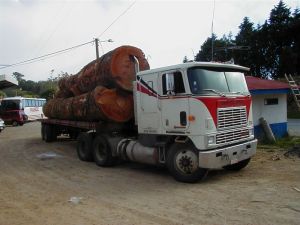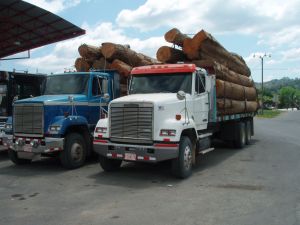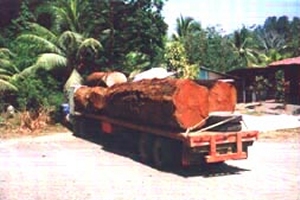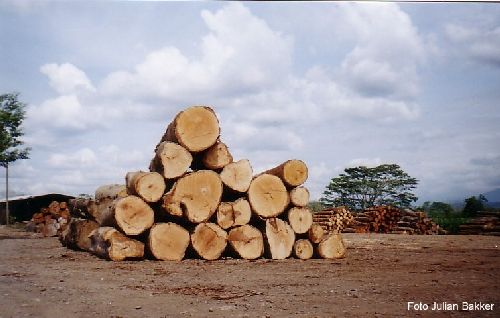Deforestation
26% of Costa Rica's land territory of 51,000 km2 (5,1 million hectares), thus aprox. 1,3 million hectares, is protected forest. Protected forest areas are national parks (28), national wildlife refuges (67), forest reserves (9), biological reserves (9), protected zones (31), wetlands (13) and natural monuments (5). In addition, there are Man & Biophere Reserves (4), Biological Corridors (68) and some 100 private Nature Reserves registered with the Red Costaricense de Reservas Naturales (www.reservasprivadascr.org) . Eleven Conservation Areas (Areas de Conservación) resorting under the Ministry of Environment MINAE administer the protected areas. In addition, there are 4 UNESCO World Heritage Sites.
In the period between 1960 and 1990, the clearing of forest in the north of Costa Rica for cattle farming and orange and pineapple planations, and in the southern zone for pineapple and palm oil plantations, has caused tremendous deforestation. Costa Rica's forested area decreased from 3,8 million hectares in 1940 to 1,2 million hectares in the early 1990's. Up to the beginning of the 1980's, deforestation rates were around 50,000 hectares per year, one of the highest in the world. According to the National Forest Development Plan 2001-2010, in 1994 the annual rate reduced to 22,000 hectares. Global Forest Watch (www.globalforestwatch.org) informs that over the years 2009 to 2020 Costa Rica lost in total 146,000 ha forest (of which some 20,000 ha humid primary forest) and gained over 2001 to 2012 some 38,000 ha (canopy density > 50%). Costa Rica's current tree cover (all vegetation higher than 5 meters) stands at 61 % or 3.14 million hectares.
In the first decade of this 21st century the main problems have been that the sanctions under the 1996 Forestry Law are far too weak and forestry engineers sometimes cooperate with landowners through inaccurate management reports, e.g. by stating that trees to be cut do not stand in logging-prohibited areas near rivers or wells, etc. In 2001, MINAE presented a report on Illegal Logging in Costa Rica - an analysis for discussion (see executive summary at Illegal_logging.pdf and in 2002 the then Minister of Environment Carlos Rodriguez presented his Strategy for the Control of Illegal Logging 2002-2007. The strategy proposed few effective measures for better control and prevention of illegal logging.


at police control Cerro de la Muerte in 2005


Measures against illegal logging have been taken, be it slowly: by 2004 MINAE decided to prohibit logging trucks passing the police control posts by night. At night there is hardly any police and in dark it was virtually impossible to distinguish the log species. Since a few years, MINAE inspectors now have PDA's- handheld computers - with GPS systems with detailed maps with forest cover so as to control any request for logging. And there are some positive results: until 2002 each year some 35% of timber harvest was illegally logged; according to MINAE since 2006 this percentage stands at 15%.

